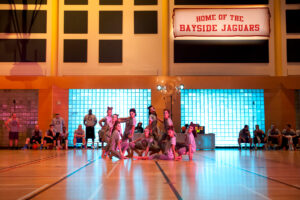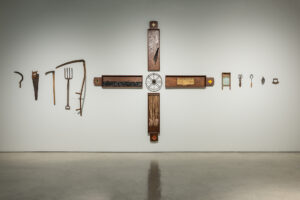Internationally acclaimed Canadian artist David Rokeby is a pioneer in digital media arts. In works that typically include video images mediated through software designed by Rokeby himself, he compares the way in which people and computers interpret everyday experience. His installations suggest that computers, which are unrestrained by human conventions of time and space, process and manage information in remarkable and unexpected ways.
Plotting Against Time includes five major installations created by the artist over the past 15 years. Morever, Rokeby was invited to Windsor for a two week residency in January by the AGW and organizers of Media City 2008, who are collaborating on this project with British curator Peter Rid. While in Windsor, Rokeby captured new images to re-work his seminal installation Watch, which he began in 1995.
Rokeby presents what is familiar in a manner that is foreign to our way of seeing. In Watch, for example, two computer generated images are presented side by side. One image shows only the stationary things such as objects or people standing still, while the other shows only things in motion, such as pedestrians or vehicles. While we too are able to differentiate between movement and stillness, our cognitive processing melds them together into a seamless whole.
Similarly in Machine for Taking Time (Boul. St. Laurent) (2006-07), two screens display different footage of a Montreal neighbourhood. These images unfold unexpectedly in time with, for example, spring preceding winter. As the anticipated chronology of events is distorted, the representation of the city becomes a mixture of memory and association. Details, such as the way in which flowering plants change through the seasons or how shop fronts alter their displays, result in a lyrical work that reminds us that familiarization is more than just an immediate observation: it is a complex fabrication, drawn from the past as well as the present.
Rokeby makes us acutely aware of the significant difference between vision, which is the processes by which we see, and of visuality, which is the way that we make meanings out of what we see. His work shows us that there are many different ways of visualizing and attaining intellectual and aesthetic pleasure out of observation.





